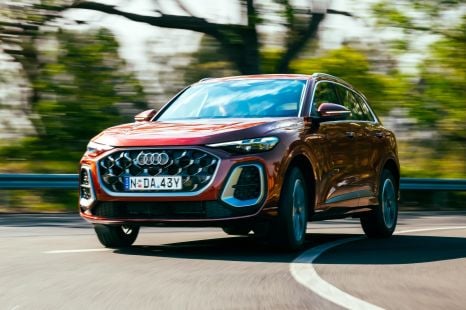

James Wong
2026 Audi Q5 review: Quick drive
5 Days Ago
The Huracan Tecnica rewards the driver with a more connected feel through the steering wheel than the Evo, coupled with that V10 soundtrack.
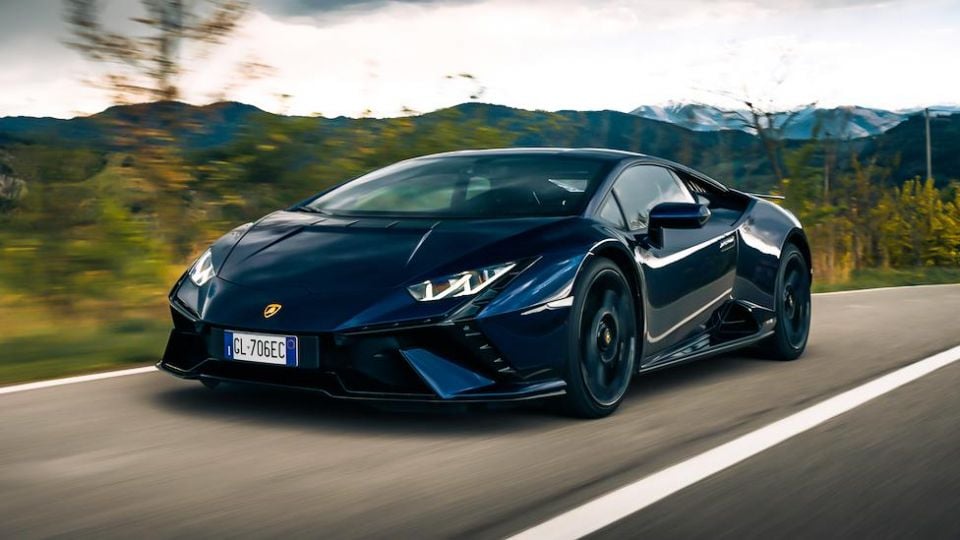
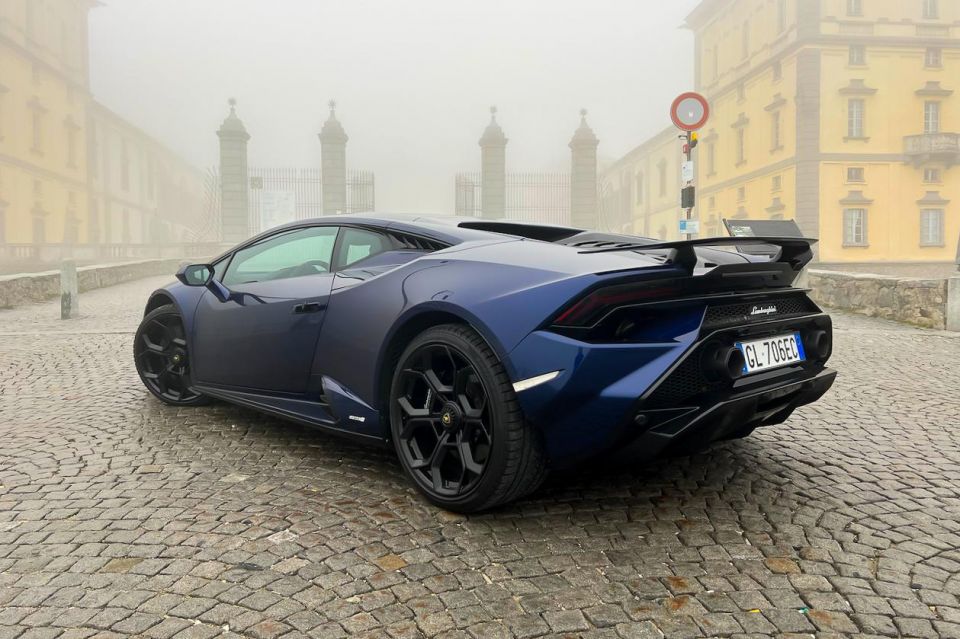

Quickly see how this car stacks up against its competition. Select any benchmark to see more details.
Where expert car reviews meet expert car buying – CarExpert gives you trusted advice, personalised service and real savings on your next new car.
There’s something quite spiritual in belting along Italy’s autostradas at warp speed in the Lamborghini Huracan Tecnica, en route from my base on the outskirts of Bologna to the small town of Biella at the foothills of the Italian Alps.

That devout vibe stems from two completely different scenarios, as it happens.
There are few things better in this world than piloting an Italian exotic; which just happens to be made in the same tiny rural town of Sant’Agata Bolognese, the same place where Ferruccio Lamborghini founded his iconic car company 60 years ago.
It’s truly a marvellous feeling when you’re driving out of the factory gates in one of Lamborghini’s finest, no matter how many times you might have been afforded the same privilege. You don’t floor it. Ever.
At least not until you’re merging onto the Autostrada some 10kms down the road. Only then do you unleash all 470kW of power generated by the mid-mounted V10 sitting behind you.
And if you’re lucky enough you might even get some welcomed encouragement from the local constabulary, known in these parts as the Polizia Stradale – the body that rule Italy’s Autostrada network. You have to understand, everyone is a car enthusiast in Italy, even the cops.
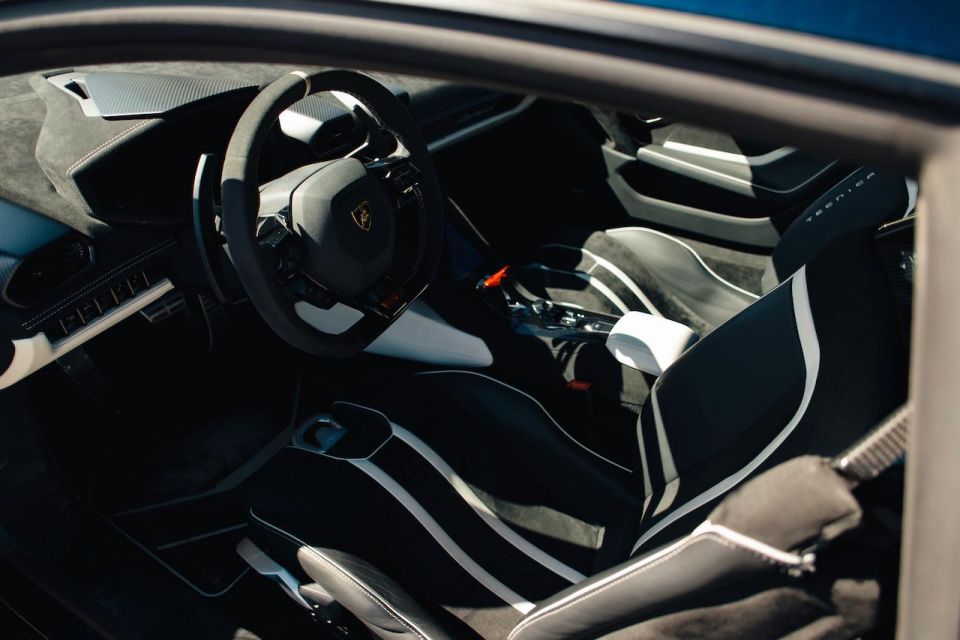
It wouldn’t be the first time I’ve had the Polizia Stradale pull up beside me and demand I get on the loud pedal, proper. ‘Dai macchina’, is their usual order – so you just punch it and disappear into the distance – seemingly with complete and utter immunity from any speeding offence. This is the way it is in Italy, and oh Lord how we love it.
The other equally spiritual sense comes from the destination itself, Biella. It’s a relatively small but significant town at the foot of the Aosta Valley, not too far from Switzerland and the world-renowned ski resort of Zermatt.
It’s also the home of world-renowned luxury brands like Ermenegildo Zegna, Cerruiti 1881, as well as Fila and Diadora. Likewise, it was also a place I called home a few decades back when I was lucky enough to have a crack at the pro tennis tour – so the place has special meaning for me outside of its fashion-industry fame.
The distance by car from my accommodation in the rural confines outside of Bologna read 430 kilometres, or around four hours drive time. But Google doesn’t know I’m driving a Lamborghini Huracan Tecnica – effectively a rear-wheel drive version of track-honed Huracan Performante, with a top speed of 325km/h.
You see, the Tecnica is designed and engineered to perform equally well on road and track, and as such, uses the same naturally-aspirated 5.2-litre V10 as its race-inspired Huracan STO sibling. The end result is 22kW more power than the all-wheel drive Huracan Evo, as well as boasting 35 per cent downforce while generating 20 per cent less drag.
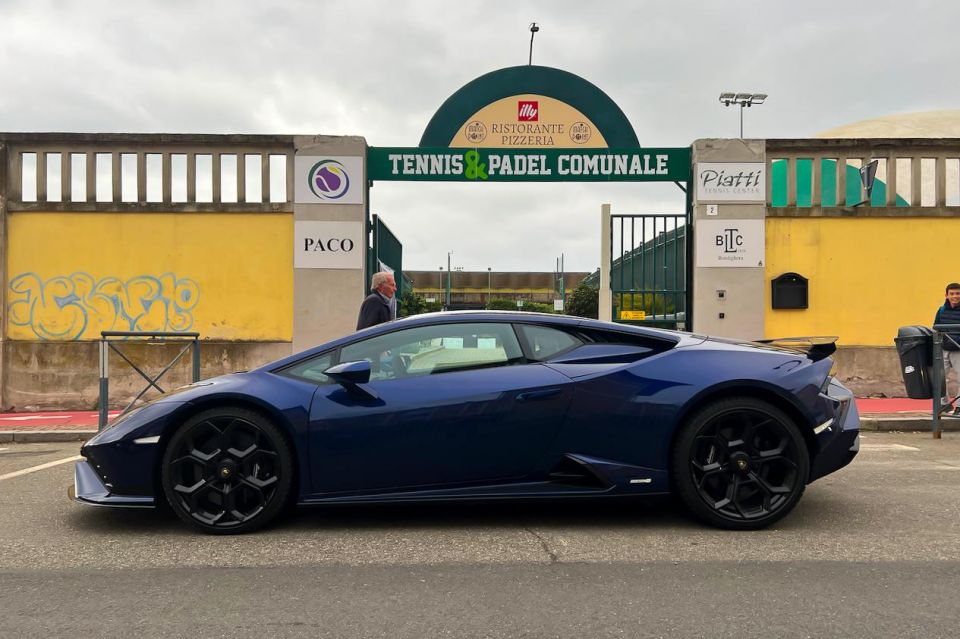
It also shares the same carbon-ceramic brakes as the Evo, but gets a beefed-up brake cooling system which uses specifically-designed air deflectors and caliper ducts that combine to reduce brake fluid temperatures and improve brake pedal feel, under load.
Weight shedding also factors large on the Huracan Tecnica, and accounts for its rear-wheel drive set-up, instead of adopting Evo’s heavier all-wheel drive system. Not only does it save a significant 43kg over the AWD Wvo, it also shaves 10kg less off the rear-wheel drive version as well.
The chassis itself is a hybrid using a combination of aluminium and carbon-fibre, while the outer skin is fabricated from aluminium and composite materials, although, the bonnet is carbon-fibre.
The Tecnica’s reduced drag stems from its enhanced aerodynamics, like its integrated rear wing, optimised underbody with new aero deflectors, and the fact it’s 6.1cm longer than the Huracan EVO.
Initially, I didn’t pick it, but look closely enough and you’ll see the exhaust tips are not only hexagonal, but also deliver a harder-edged sound than the regular Huracan Evo.
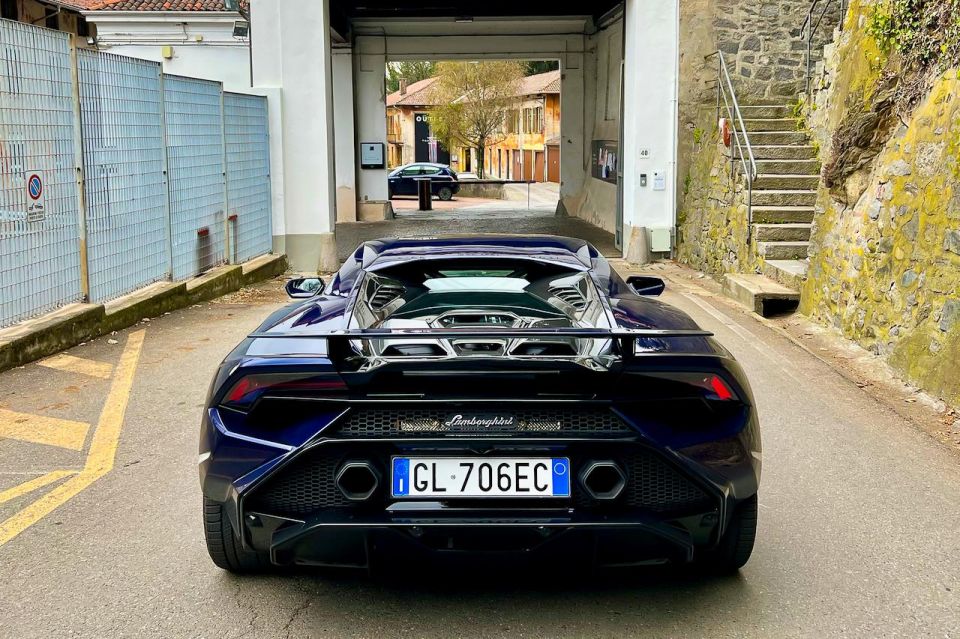
Even though it’s the same height and width as the Evo, its longer length gives it a silhouette with a line or two from the outrageous Essenza SCV12 track-only Hypercar.
From a styling perspective, Tecnica also takes inspiration from Lamborghini’s spaceship-like Terzo Millennio concept, by employing a front bumper featuring the same black Ypsilon design that also incorporates an air curtain.
The front splitter is lower, too, offering improved downforce and giving additional cooling thanks to open slats which direct airflow through the actual wheels.
Capping off the Tecnica is a gorgeous set of 20-inch Damiso diamond-cut wheels in gloss black – taking inspiration from Lamborghini’s very own Vision Gran Turismo effort.
If you need to ask, it wears a $440,000 price tag, excluding on-road costs and any options you might want to add. We doubt there’d be much change from $550,000 including on-roads with just a handful of options included.
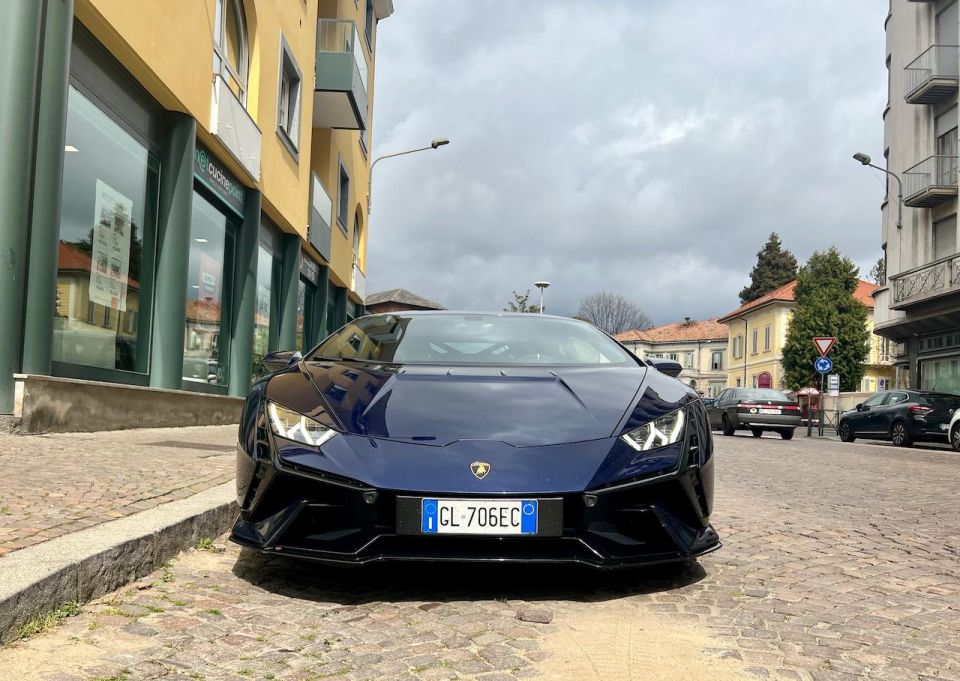
Nevertheless, it’s still significantly less than the rear-wheel drive Huracan STO ($596,000) from which it draws much inspiration, as well as the all-wheel drive Evo Coupe ($459,441).
On the flip side, the Tecnica’s road/race duality also commands a sizeable premium over its entry-level Evo sibling with rear-wheel drive ($384,187) and Spyder version ($422,606).
Direct rivals with a naturally-aspirated V10 that redlines at 8500rpm are none. Zilch. It Inherently makes the Huracan Tecnica a very special bit of kit in the supercar world these days, given the proliferation of turbos and electrified powertrains which dominate the segment.
However, Tecnica’s super-sport rivals include; Aston Martin Vantage ($352,500), Ferrari 296 GTB ($568,300), Maserati MC20 ($467,000), and Porsche 911 Turbo ($431,000).
Buy your new car without the stress. It's fast, simple and completely free.

Great service from Travis and team, second time I have used this business would not hesitate to recommend them to anyone
Craig C.
Purchased a Ford Ranger in Sunshine Coast, QLD
CarExpert helped Craig save $7,224 on his Ford Ranger, now let us save you on your next new car.
Get your BEST priceIt might be a hardcore super-sports car but there’s also high level of craftsmanship on display throughout the cabin, not the least of which are the swathes of hand-stitched Alcantara that cover the entire dash, seat inserts, including seat backs, steering wheel and a sizeable portion of the door cards.
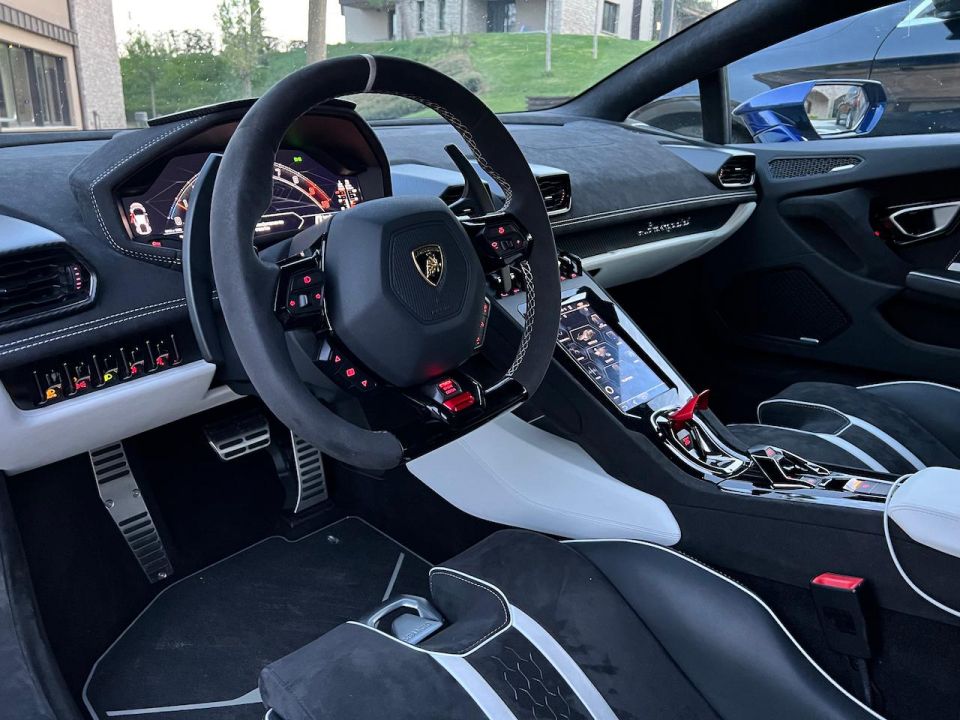
In fact, anything not wrapped in either Alcantara or the softest leather is likely to be carbon-fibre – either with a matte finish or beautifully-lacquered, which just so happens to be produced in-house at Lamborghini.
You see, the Italian carmaker has become something of a maestro in the art of carbon-fibre fabrication, and uses a variety of finishes for its ultra-lightweight material, all of which are top-shelf.
The cockpit itself is one of the most exciting in the business, with the immediate effect of making you feel like a fighter pilot – as corny as that might sound to anyone but the person in the driver’s seat.
It’s down to the gloss-red, weapons-hot cover that cloaks the start/stop button. Flipping the switch in order to fire-up the NA V10 always feels cool and never seems to get old. What’s more, only Lamborghini can get away with such Hollywood-style theatrics these days.
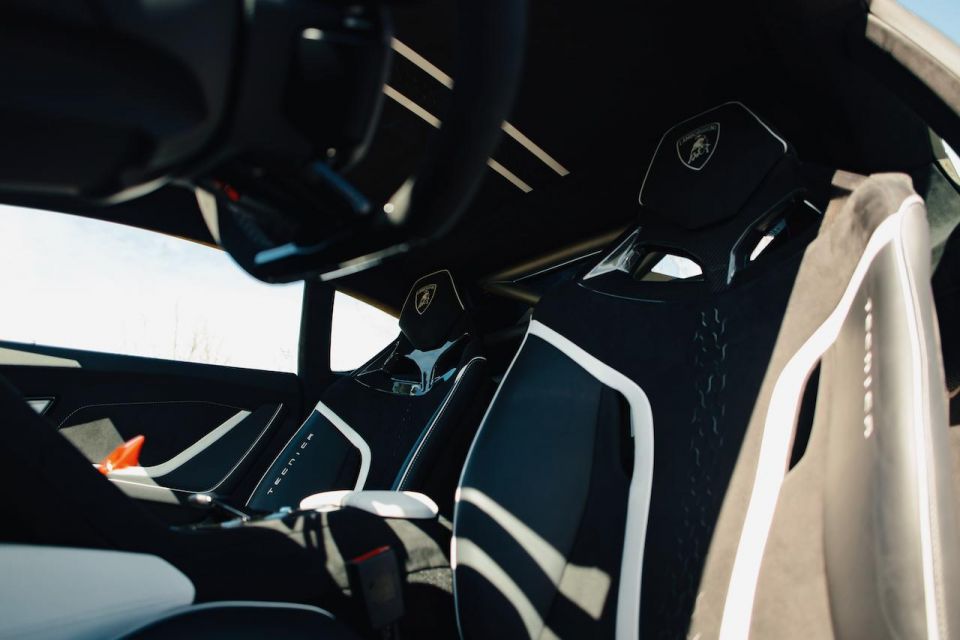
The carbon-fibre-framed sports buckets are manually adjustable in every respect, and you’ll need a reasonable degree of flexibility and quad strength to lower yourself into them given the Tecnica’s extra-low right height.
It stands just 1165mm tall at its highest point. On the flipside, it also offers one of the most perfectly postured driving positions in the game and perfect for low flights on the Autostradas. But the low-slung driving position also has one major drawback if, like me, you don’t happen to have an electronic toll pass.
So low is the seating position – a fact further exacerbated by my less-than-average stature – necessitating the driver to quickly develop a specially choreographed routine every time you’re required to stop at the toll booth either to take a ticket or pay the toll.
Not only do you have to put the left-hand-side of the car mere millimetres from the ticket dispenser without grazing a wheel in order just to reach it, but you’ll also need to leave enough space to crack the door slightly open and then edge your left buttock onto the door sill just to reach the ticket dispenser/payment pad – that’s after you’ve put the car in Park.
And forget about tap-and-pay too, you’ll need a physical credit card in-hand (or mouth) ready to tap and pay. Believe me, it can be quite an ordeal.
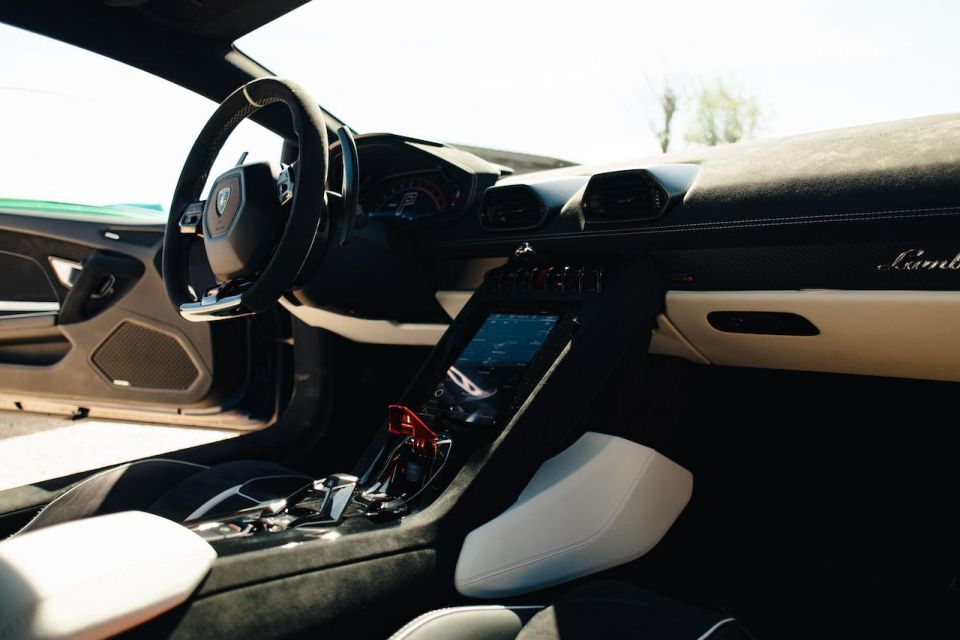
With most buyers opting for Lamborghini’s personalisation program it calls ‘Ad Personam’, there’s no right or wrong choice with paint or interior colours and materials – more than 200 exterior choices alone.
On paper, I would have gone for a tan interior (still using Alcantara) as the ideal contrast to the Blu Astraeus paint, but I’m now partial to the steel blue with chalky highlights – some of these also mirroring the Ypsilon design in the new front bumper.
The same goes for the air-con vents, only in the Tecnica its unlacquered carbon, whereas the extra-long paddleshifters are perfectly positioned plastic versions, though I suspect a carbon option is more than likely on the full options menu.
Nevertheless, the Huracan is getting on a bit now (launched in 2014), and while technology and infotainment has remained contemporary with various updates along the way and now with a huge digital driver’s display that offers strong colours and crystal-clear clarity, along with a reasonably-sized infotainment tablet mounted on the centre-console bridge.
The console itself is dominated by the start/stop rocker-style switch, and similarly shaped Reverse lever. The only actual button is the Park function along with a couple of rocker-switch banks which some might misconstrue as dated, but it pays homage to classic Lambos of the past and is a nice touch in my view.
While there’s also plenty of functionality and connectivity with the infotainment system including Apple CarPlay, Android Auto, and Amazon Alexa, the Tecnica also gets connected telemetry and on-board diaries of destinations and track times through Lamborghini’s exclusive UNICA app.
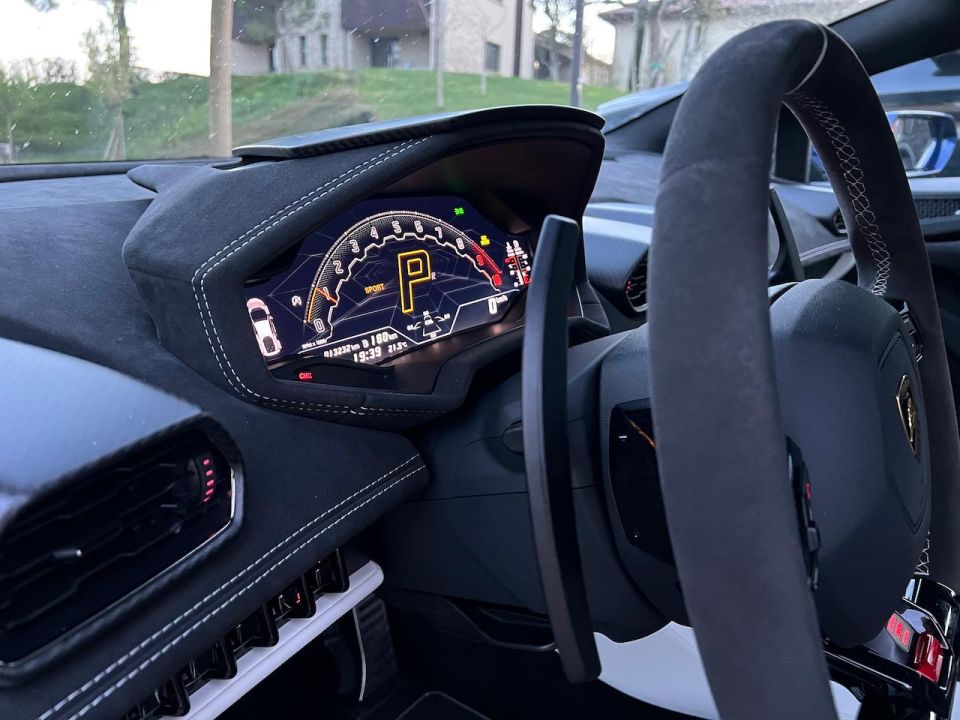
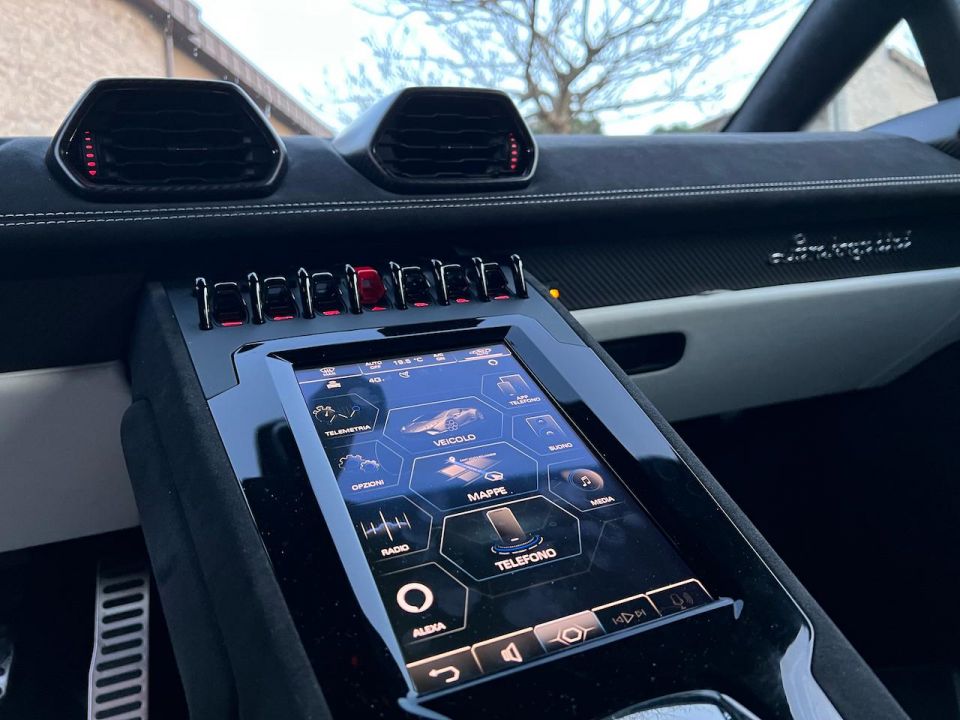
There are more buttons on the steering wheel, too, but the feature item is the matching-red drive mode switch on the bottom spoke, which allows the driver to select Strada, Sport and the track-focused Corsa mode.
You’ll notice there’s no traditional indicator stalk. Like Ferrari, Lamborghini doesn’t do those. Instead, you’ve got another thumb-driven rocker switch on the left-hand-side that takes care of that job. You get used to it pretty quickly and it becomes second nature in no time.
Storage receptacles for keys, phones and wallets is limited but for the console bin and door pockets. It’s annoying to a point but you quickly work around it, otherwise there’s some storage space behind the seats for small (and narrow) bags. The main storage area is found in the frunk where you’ll find a 100-litre luggage bin capable of swallowing a couple of soft bags or one hard cabin bag and something soft and squishy on top. Certainly more than enough for an overnight stay or two.
It’s still Lamborghini’s tried-and-true 5.2-litre naturally-aspirated V10, making 470kW of power at 8000rpm and 565Nm of torque at 6500rpm, sent exclusively to the rear axle via a superbly responsive seven-speed dual-clutch transmission.
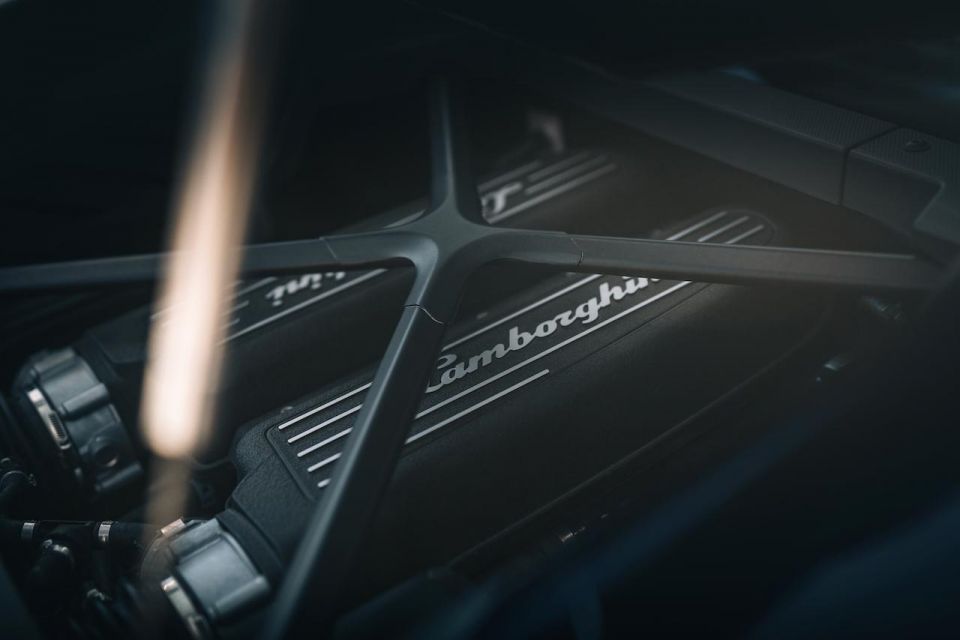
Launch it and the Huracan Tecnica will go from standstill to 100km/h in a rapid 3.2 seconds, whereas 0-200km/h takes just 9.1 seconds. Top speed is 325km/h.
Tecnica’s braking power is equally stupendous thanks to standard-fit carbon-ceramic 380mm brakes up front using six-piston calipers, and 356mm rear discs with four-piston calipers. The result is a car which can pull up from 100-0km/h in a distance of 31.5 metres.
That’s in stark contrast to Ferrari’s F8 Tributo that uses a more powerful twin-turbo V8 making a whopping 530kW and 770Nm, or McLaren’s new-generation hybrid supercar called the Artura, which employs a 3.0-litre twin-turbo V6 producing 500kW and 720Nm.
While both are quicker than the Lambo out of the box to 100km/h (Ferrari 2.9s; McLaren 3.0s), I’d argue the Tecnica has one of the best exhaust notes on the planet – bettered only by V12 in the Aventador.
It was April 2008 when Alborz, Paul and I arrived on the doorstep of Lamborghini’s historic factory in Sant’Agata Bolognese for the first time in our lives to collect a Gallardo Superleggera, as well as a Spyder for what would be an unforgettable drive up into the Aosta Valley on some of the finest driving roads in Italy.
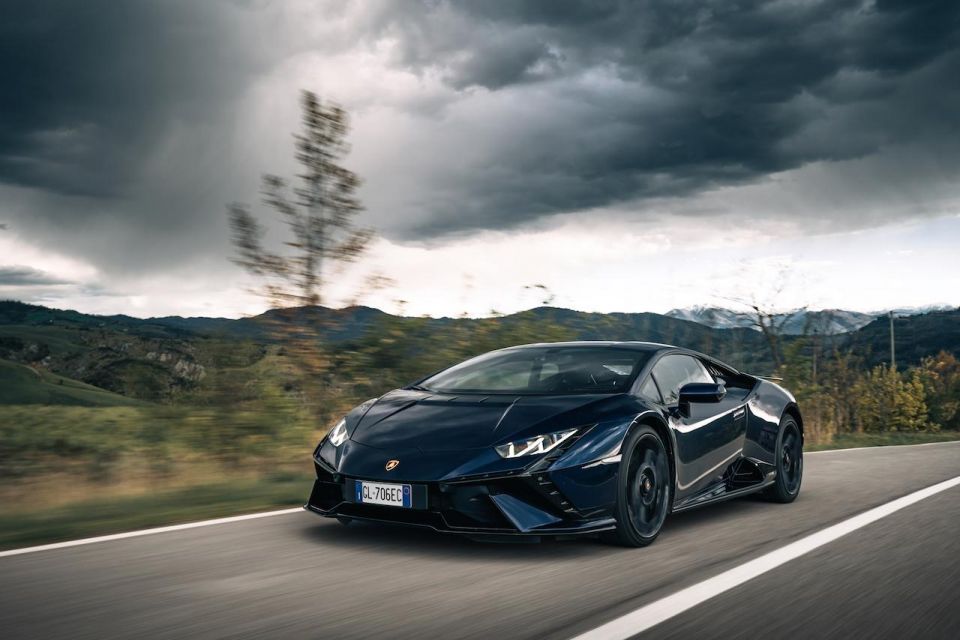
But the real magic of that experience started before we even left the factory, from the very moment we saw the then (and now) CEO, Stephan Winkelmann, and his entourage of trusted colleagues stopping to chat as we were setting up the cameras for that momentous drive out of the factory gates.
The thing is, 15 years on there’s still nothing like firing up a Lamborghini V10, knowing you’re about to jet off on a blindingly-fast 400km journey, only this time it’s in a Huracan Tecnica, without Paul or Alborz to hold me up.
While it’s important to have the quieter Strada mode when leaving the house early in the morning or returning home late, there’s not nearly enough of that glorious V10 exhaust note. Nowhere near enough, unless you’ve got enough clear road ahead to wind it up above 4000rpm – only then are you rewarded with a mechanical concerto like few others in the business can offer.
For more of that aural bliss though, it’s easier to just to scroll down to Sport for an entirely more visceral response to the throttle, even at low speed. Mind, it also recalibrates engine and throttle response, so it can be a bit toey in traffic, but then the moment you merge onto the Autostrada or peel off onto some lonely Italian B-road, you’re utterly free to unleash everything the Tecnica has to offer.
On dry tarmac, it isn’t long before you’re completely dialled in and ready ramp it up in Corsa mode – for the full-force of what this specially-honed Huracan is capable of. It’s properly rapid but not in a brutal sense like the Aventador at full tilt, with the added bonus of a gloriously linear throttle.
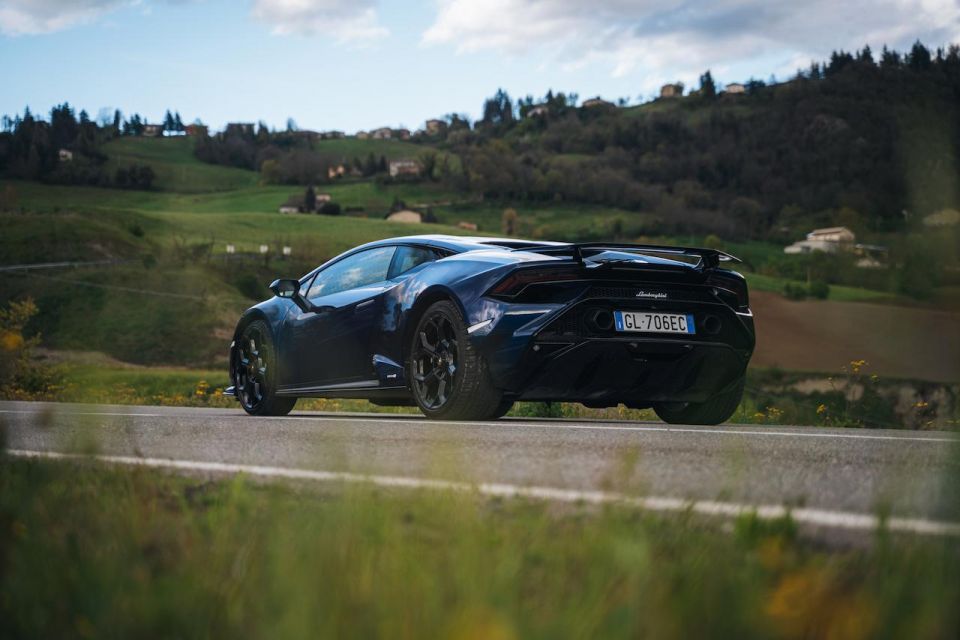
In a car like this and in a country like Italy, there’s no sense in moving out of the far-left lane (the fast lane in Europe).
The tolerance for speed by the appropriate constabulary can be exceedingly high, and while I can’t tell how high the speedometer needle climbed at times, the Tecnica has the ability to turn long-distance travel into shorter hops without feeling like you’re really been pushing.
There’s also a lot of goodwill towards the Lamborghini brand in Italy, perhaps even at levels equivalent to Ferrari and especially with the younger crew – as displayed all so often by countless drivers automatically pulling to the right upon the very instant of seeing Huracan’s distinct DRLs looming up large behind them.
Nevertheless, and even at this kind of furious pace, I chose to throttle back and settle into life in the fast lane; in Strada mode, mainly out of the need to conserve fuel for fear of any issues with my credit card at a fuel stop – at least until I reach Biella where my friend Lino Zuffi can address any such language issues I might myself in.
I’m always surprised by how quickly supercars can drain their fuel tanks when blasting along at serious pace. It can be quite alarming, even in the Huracan Tecnica, despite its huge 140-litre benzina capacity.
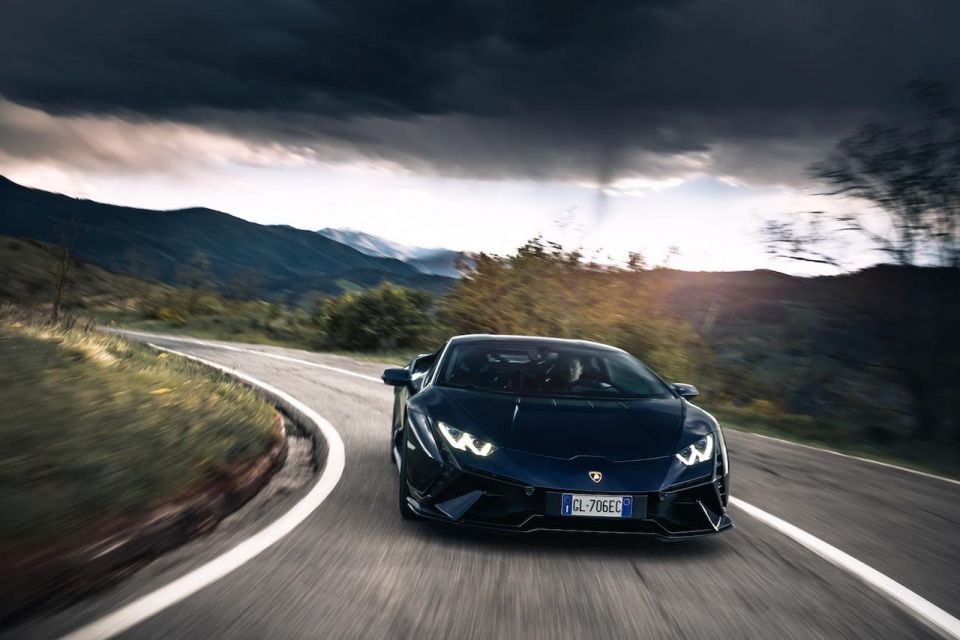
Where expert car reviews meet expert car buying – CarExpert gives you trusted advice, personalised service and real savings on your next new car.
Nevertheless, I exit the Autostrada with a decent 140km of range remaining. No range anxiety there when you factor in the 40km city speed limits and endless roundabouts in these parts. Still, I’m enjoying the reactions and smiles from the locals – of all ages, I might add.
That said, I switch back to Sport again for its more inspiring exhaust note, and there’s no issue with the increased throttle sensitivity now that I’ve become accustomed to it.
The meeting point is Piazza Lamarmora, followed by a light pesto pasta, coffee and biscotti at the wonderful Caffe del Teatro Biella – but not before the Huracan Tecnica was mobbed by school kids asking for selfies in the driver’s seat. This is surely what car culture is all about.
Believe it or not, Lamborghinis (and Ferraris) are a relatively rare site in these parts, if not Italy in general, at least outside of the factory surrounds. Local sales account for just 4.0 per cent of Lambo’s global output.
Zuffi was the head of Tennis Club Biella in the ’80s when I was living here, so he’s getting on a bit but still plays golf and walks everywhere now that he’s living in an apartment in town. He’s never really been a car guy but clearly the Huracan Tecnica has raised his interest, as he suggests a tour of sorts.
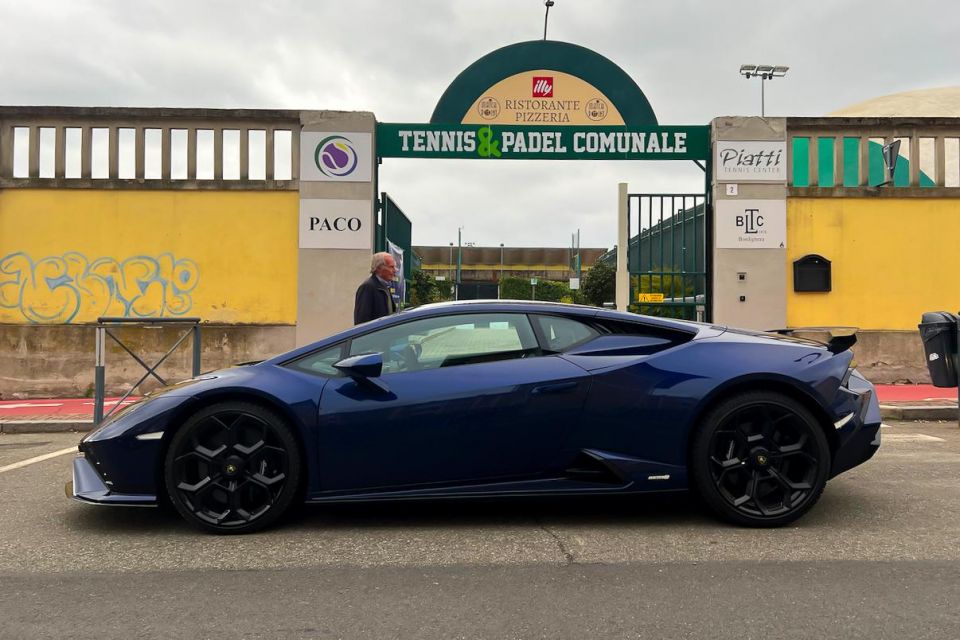
Naturally, I’m keen to visit the tennis club where I spent many hours bashing balls on centre court. The red clay surface hasn’t changed, but the club is now a tad more modern.
Shortly after, we’re enjoying a hill climb up to the holy Sanctuary of Oropa, a monastery dating back to the ninth century where you’ll find the statue of the ‘Black Madonna’ – said to have been sculpted by Saint Luke in Jerusalem and brought over to Italy in the Fourth Century AD.
The road itself stretches about 11 kilometres, with an endless series of snake-like bends and a few tight left-hand hairpins; which the Tecnica crushes with nothing but the sound of the V10 downshifting a couple of gear ratios to break nature’s serenity up here.
Mind, there’s a few small villages on the way up which offer the perfect surround-sound speaker box, as the exhaust note bounces off the double-sided rock walls thousands of years old.
At the very top it barely plateaus, while the entire monastery is cloaked in mist just as it was 15 years ago; when Paul, Alborz and I arrived touting a spanking new Gallardo Superleggera and Spyder. It’s still eerily foggy and no less majestic.
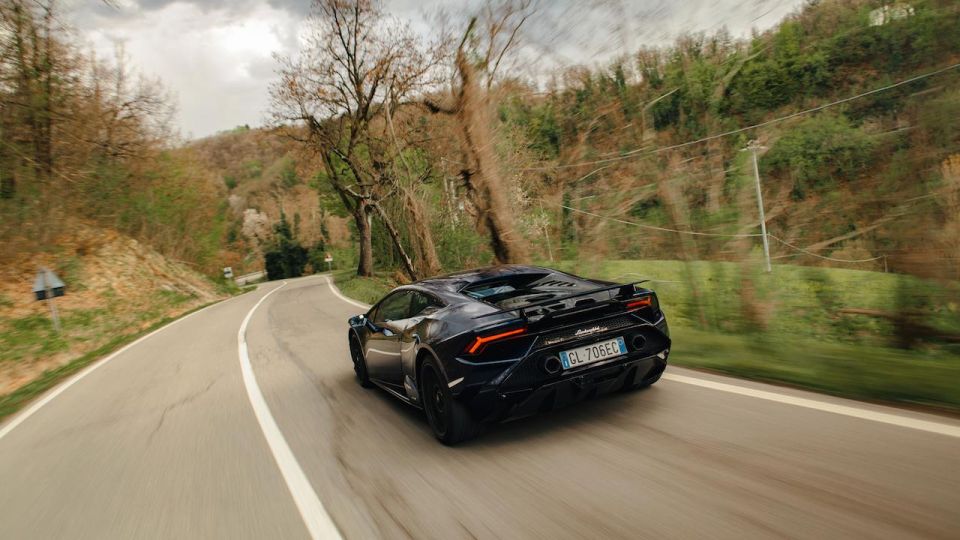
Naturally, I would have liked to have gone quicker; but Zuffi is now 85 and although not really a car guy, I can see he’s loving the ride (and the sound), even at this mostly relaxed pace.
That’s the thing with the Tecnica, you can be super-smooth with all the major controls yet still be captivated by its inherently linear feedback from the throttle, steering and brakes. And, the noise it makes is only bettered by a Lamborghini V12.
Left to its own devices in Corsa or even Sport, the seven-speed dual-clutch gearbox is beautifully calibrated for auto shifts both up and down. Approaching the hairpins in third or fourth it’ll drop two gears within a blink, while accompanied by perfectly-timed throttle blips before you get back on the power on , as gently as I can possibly be.
The feedback through the front axle and steering wheel is simply poetic, and a celebration of the more involving rear-wheel drive versus the standard Evo’s all-wheel drive architecture. There are of course pluses for the latter including wet-weather traction, but for the moment I’ll take the more visceral rear-wheel drive of the Tecnica.
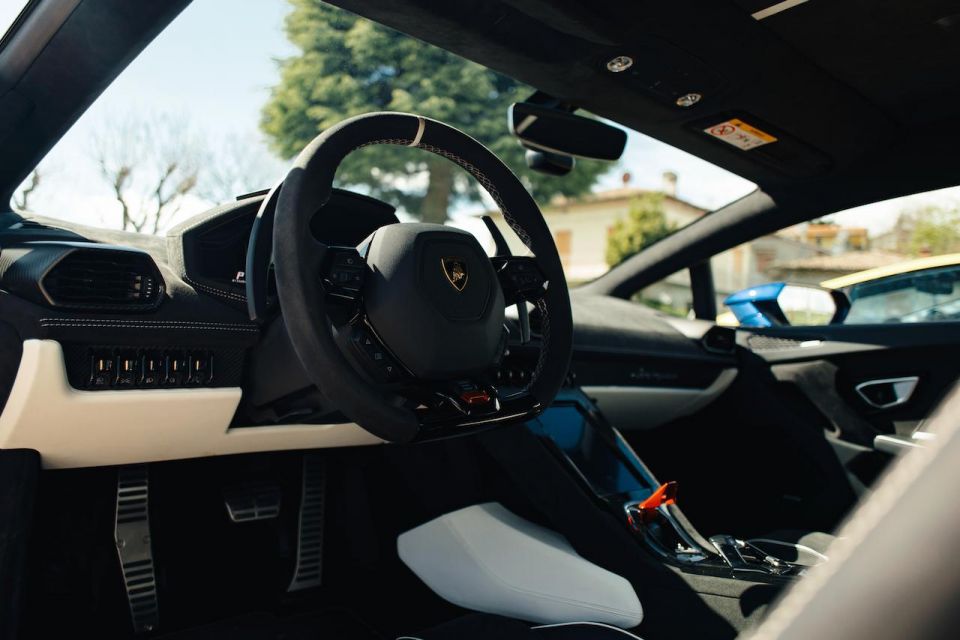
Standard equipment includes:
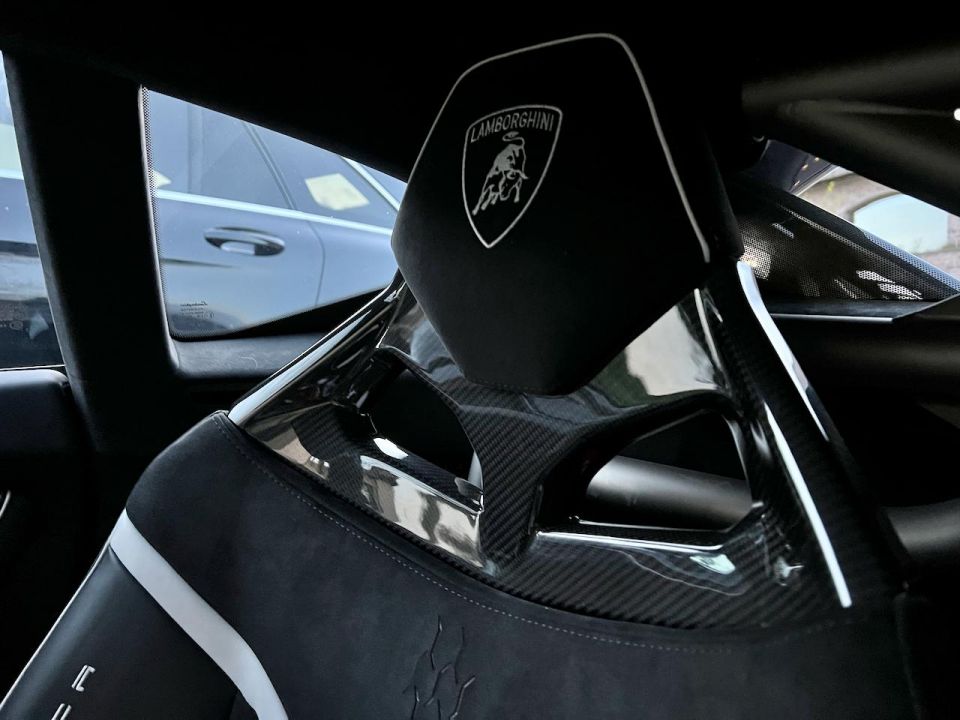
Options fitted to our tester:
Those added options add $76,750, bringing the total cost to $516,750, excluding on-road costs.
Like all supercars, the Lamborghini Huracan has never been crash tested, so there’s no ANCAP or Euro NCAP safety rating applicable.
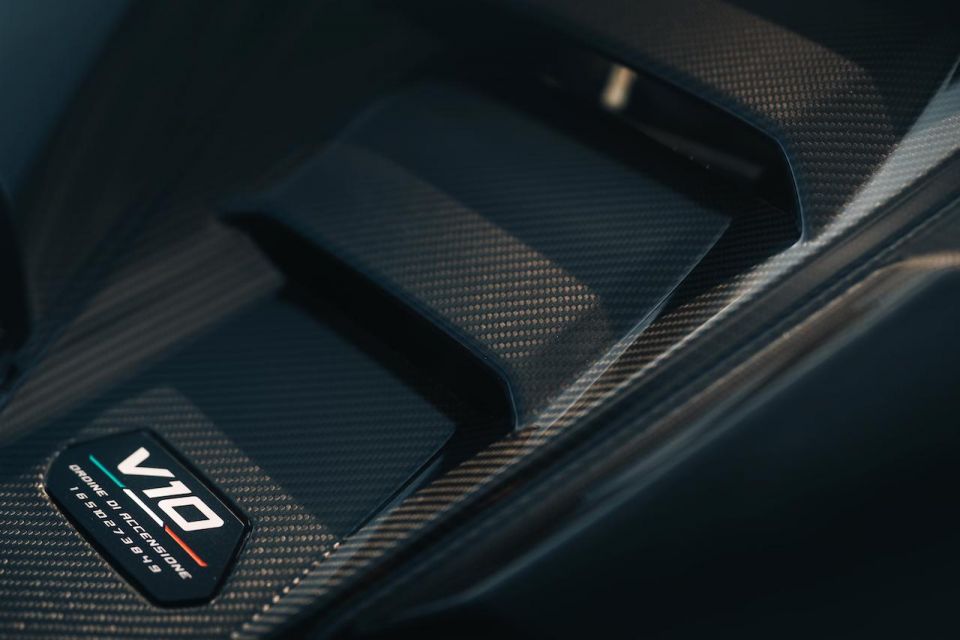
Even so, it’s worth noting the Huracan misses out on a variety of assistance features like autonomous emergency braking and lane-keep assist, but that’s not too dissimilar to rival models from Ferrari and McLaren.
Unlike Ferrari, Lamborghini does not provide seven years of free servicing with its cars.
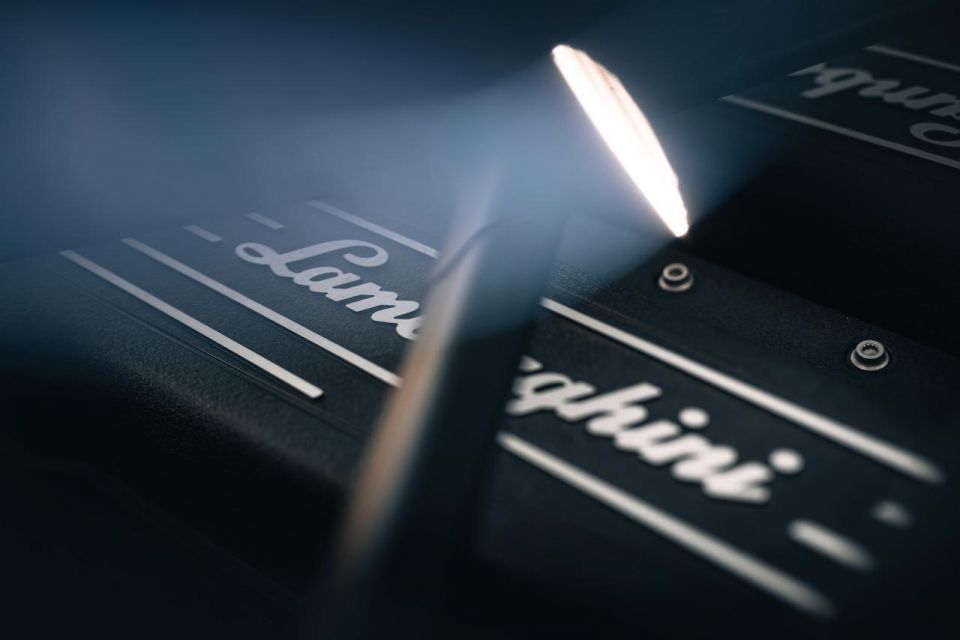
The Huracan is similar to the Audi R8 and goes through an A and B service cycle.
Prices range from around $1500 to $4500 depending on the extent of work carried out.
Buy your new car without the stress. It's fast, simple and completely free.

Great service from Travis and team, second time I have used this business would not hesitate to recommend them to anyone
Craig C.
Purchased a Ford Ranger in Sunshine Coast, QLD
CarExpert helped Craig save $7,224 on his Ford Ranger, now let us save you on your next new car.
Get your BEST priceLet me start by saying the standard Huracan Evo I drove at the Bahrain F1 circuit at its global launch remains one of the most exhilarating and confidence inspiring track drives I’ve ever experienced; thanks to a five-lap, flat-out session behind the late Peter Muller (Lamborghini’s former chief driving instructor).
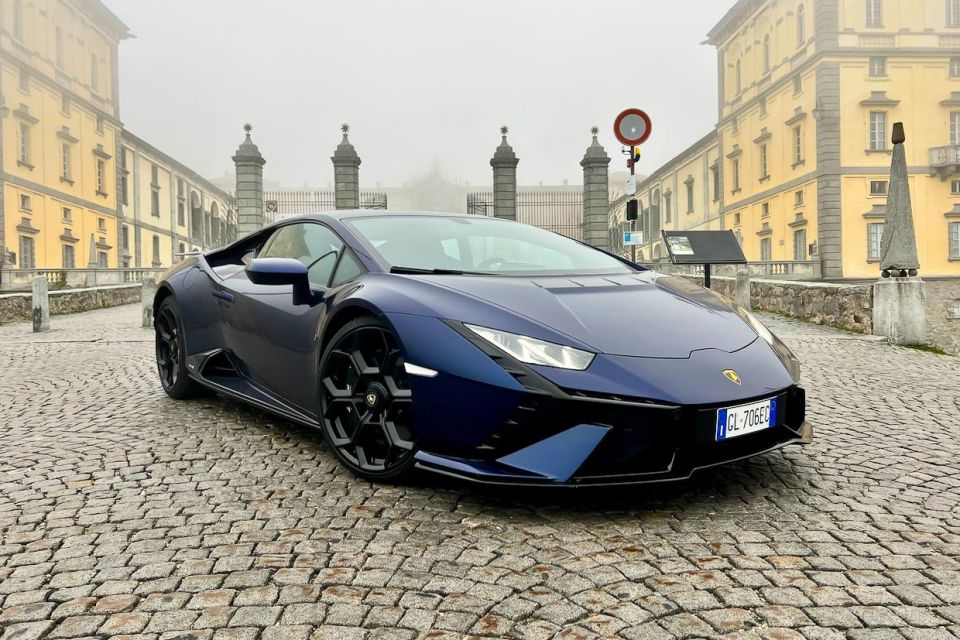
So accomplished is that car, I’ve never really subscribed to the need for such a hardcore version as the Huracan Performante, but the Tecnica is different.
I wouldn’t go so far as to call it the ‘sweet spot’ in the range, because that accolade still goes to the Evo AWD for its outstanding balance between ride, handling and performance, in all manner of conditions, too.
However, the Tecnica is sharper with a more focused approach to high-speed handling, but at the expense of ride comfort even in its least aggressive setting. It also rewards the driver with a more connected feel through the steering wheel, thanks to its lower ride height, weight shedding and rear-wheel drive set-up.
Then there’s that magnificent soundtrack of Lamborghini’s naturally-aspirated V10 at full noise. It’s almost god-like in its ability to spiritually enhance the driving experience – especially in Italy.
Finally, it’s hands down one of the best-looking cars on the planet, and one that was literally mobbed by school kids of both genders.
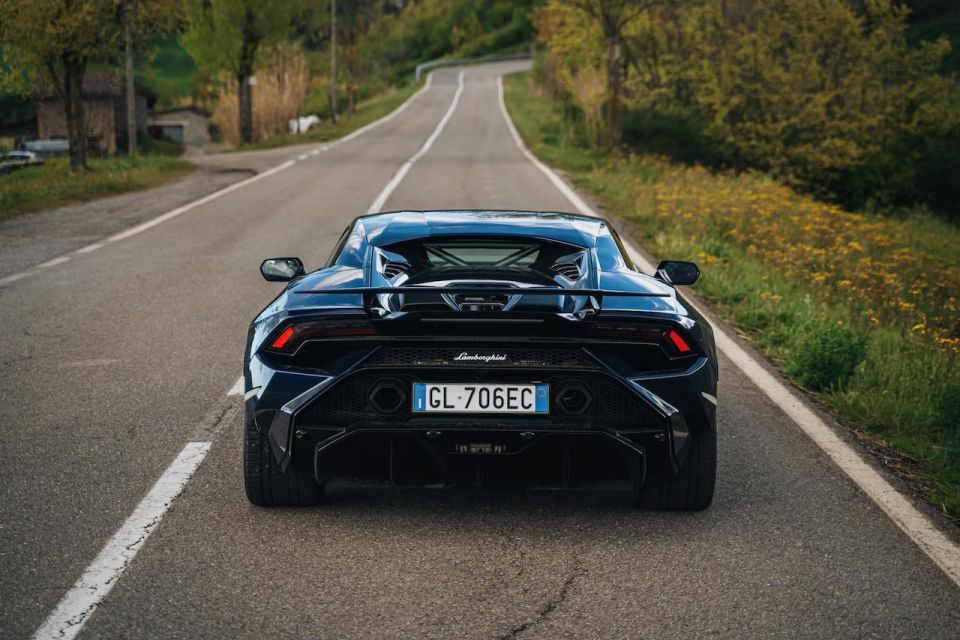
Click the images for the full gallery
Where expert car reviews meet expert car buying – CarExpert gives you trusted advice, personalised service and real savings on your next new car.


James Wong
5 Days Ago


James Wong
5 Days Ago
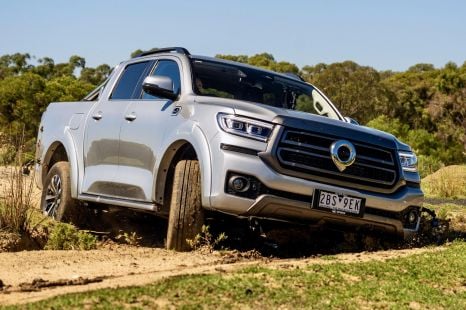

Max Davies
4 Days Ago
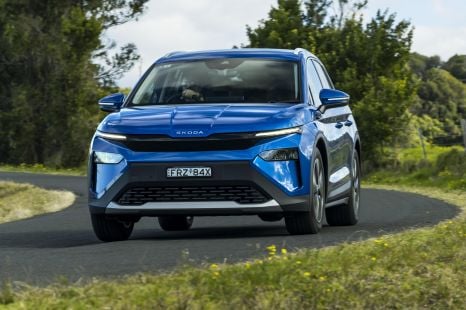

Josh Nevett
2 Days Ago
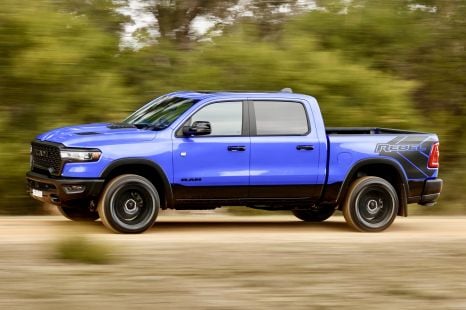

Max Davies
2 Days Ago
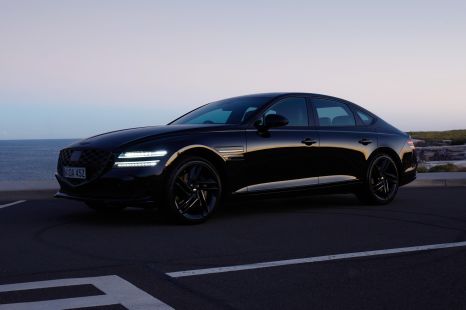

William Stopford
1 Day Ago